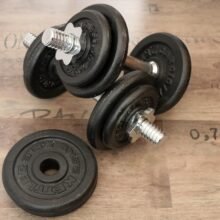What is the Best Exercise for Weight Loss: A Scientific Guide
Introduction
When it comes to losing weight, exercising is a crucial component of any successful weight loss plan. However, with so many different exercises to choose from, it can be overwhelming to determine which ones are most effective for weight loss. In this article, we’ll take a scientific look at the best exercises for weight loss, and explore the research-backed benefits of each.
The Science Behind Weight Loss
Before we dive into the exercises, it’s essential to understand the science behind weight loss. Weight loss is achieved when your body burns more calories than it consumes. The most effective exercises for weight loss are those that not only burn calories during the exercise itself, but also boost your resting metabolic rate (RMR) in the hours following the workout. This means your body continues to burn calories at an elevated rate, even when you’re not actively exercising.
EPOC and Weight Loss
One of the key factors to consider when evaluating exercises for weight loss is something called Excess Post-Exercise Oxygen Consumption, or EPOC. EPOC refers to the increased oxygen consumption by your body after exercise, which can last anywhere from 15 minutes to several hours. Higher-intensity exercise tends to result in greater EPOC, which can translate to increased caloric expenditure in the hours following the workout.
The Best Exercises for Weight Loss
With the science behind weight loss in mind, let’s explore the best exercises for weight loss. Here are some of the most effective, backed by research:
High-Intensity Interval Training (HIIT)
HIIT involves short bursts of high-intensity exercise followed by brief periods of rest. This type of exercise has been shown to increase EPOC and boost metabolism in the hours following the workout. Examples of HIIT workouts include sprint intervals, burpees, jump squats, and mountain climbers.
Strength Training
Strength training exercises, such as weightlifting or bodyweight exercises, can help build muscle mass. The more muscle mass you have, the higher your RMR, which can help increase caloric expenditure. Focus on compound exercises like squats, deadlifts, and bench press to build muscle efficiently.
Circuit Training
Circuit training involves completing a series of exercises in rapid succession, with minimal rest in between. This type of exercise has been shown to increase EPOC and improve cardiovascular fitness. Examples of circuit training workouts include Tabata, CrossFit, and boot camp-style workouts.
Aerobic Exercise
Aerobic exercise, such as running, cycling, or swimming, can help improve cardiovascular fitness and increase caloric expenditure. Aim for at least 150 minutes of moderate-intensity aerobic exercise per week to reap the benefits.
Conclusion
The best exercise for weight loss is one that challenges your body, boosts your metabolism, and burns calories in the hours following the workout. By incorporating HIIT, strength training, circuit training, and aerobic exercise into your fitness routine, you can achieve lasting weight loss results. Remember to always consult with a healthcare professional before starting any new exercise program, and be sure to incorporate a balanced diet and healthy lifestyle habits to support your weight loss goals.


